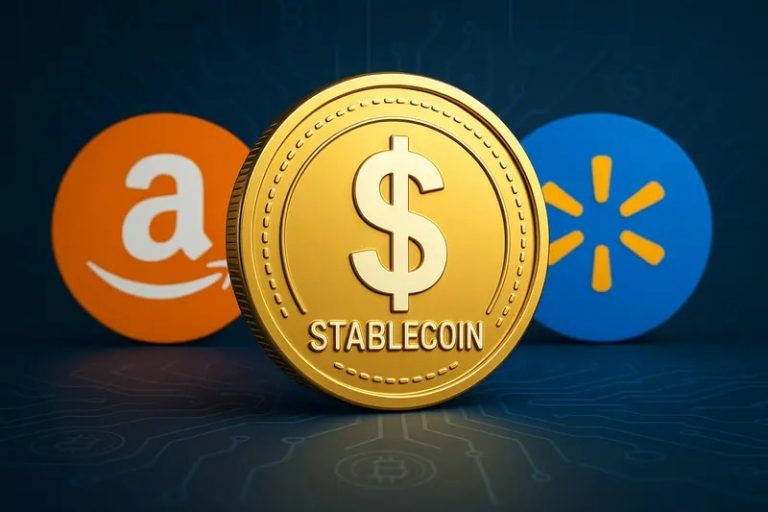
Retail giants Amazon and Walmart are reportedly exploring the launch of their own U.S. dollar-pegged stablecoins, according to The Wall Street Journal.
The move signals a significant shift in how major retail players are thinking about the future of payments—away from traditional banking infrastructure and toward blockchain-based financial instruments that promise faster, cheaper, and more borderless transactions.
Unlike volatile cryptocurrencies such as Bitcoin, stablecoins are designed to maintain a fixed value, typically pegged to a fiat currency like the U.S. dollar or commodities such as gold. Amazon and Walmart’s consideration of stablecoins underscores a growing trend of institutional adoption and comes at a time when stablecoins are increasingly being positioned not just as a private sector innovation—but as a tool of national financial strategy.
Register for Tekedia Mini-MBA edition 19 (Feb 9 – May 2, 2026): big discounts for early bird.
Tekedia AI in Business Masterclass opens registrations.
Join Tekedia Capital Syndicate and co-invest in great global startups.
Register for Tekedia AI Lab: From Technical Design to Deployment (next edition begins Jan 24 2026).
Institutional Adoption Grows on the Back of U.S. Government Backing
Stablecoins are no longer confined to crypto-native startups. Major financial institutions like JPMorgan Chase, Citigroup, Bank of America, and Wells Fargo are already working on launching a joint stablecoin, while travel tech firms like Expedia and U.S. airlines are looking into stablecoin integration to optimize payments and reduce cross-border transaction frictions.
This momentum is being buoyed by growing U.S. government support. U.S. Treasury Secretary Scott Bessent, speaking before a Senate Appropriations subcommittee on Wednesday, projected that dollar-linked stablecoins could surpass $2 trillion in market capitalization, positioning them as a strategic financial instrument for global economic growth.
“The rise of stablecoins is part of a larger strategy to enhance and preserve the U.S. dollar’s position as the world’s reserve currency,” said Bessent, a veteran of global currency markets and former hedge fund executive. “Stablecoin legislation backed by U.S. Treasuries or T-bills will create a market that will expand U.S. dollar usage via these stablecoins all around the world.”
Bessent also revealed that legislation is being drafted in Congress that would mandate stablecoins to be fully backed by high-quality liquid assets, such as U.S. Treasury bills. The goal is to ensure price stability, build trust among users, and create a transparent framework that could attract even more corporate issuers like Amazon and Walmart.
“This administration is committed to keeping the reserve currency status and enhancing that,” Bessent added, reinforcing the idea that stablecoins are now being considered an extension of U.S. financial policy.
What This Means for Amazon and Walmart
For Amazon and Walmart, the push toward launching stablecoins is as much about logistical optimization as it is about financial independence. With massive global operations, these firms stand to save billions on transaction fees, enhance settlement speed, and reduce reliance on intermediaries like banks and card networks.
Amazon has previously posted crypto-related job openings and invested in blockchain tools through its AWS cloud division. Walmart, meanwhile, filed patents several years ago for a digital currency and has tested blockchain to track supply chains.
However, both companies are likely waiting for clearer regulatory signals, especially around the GENIUS Act—a proposed bill that aims to govern the issuance and backing of stablecoins. While the bill is receiving Republican support, it has faced criticism from Democrats who warn about the risks of private corporations issuing widely used digital money.
According to DeFiLlama, the total market cap of stablecoins currently stands at $251 billion, dominated by Tether’s USDT and Circle’s USDC, which collectively command more than 86% of the market. Smaller entrants like PayPal’s PYUSD and even USD1, a stablecoin tied to entities affiliated with President Donald Trump, have failed to gain significant traction.
However, the entry of Amazon and Walmart could change that. With their vast customer bases, global reach, and infrastructure to support adoption, these firms could quickly become dominant players in a space previously led by fintech startups and crypto-native platforms.
Their adoption of stablecoins would not only put pressure on existing players but could also accelerate the normalization of digital dollar usage in everyday commerce, laying the groundwork for a broader transformation of how payments are handled globally.
In essence, stablecoins are no longer a fringe innovation. They’re rapidly evolving into a pillar of modern finance, and the involvement of Amazon, Walmart, Wall Street banks, and the U.S. government suggests they may soon become as ubiquitous as credit cards—and far more transformative.



